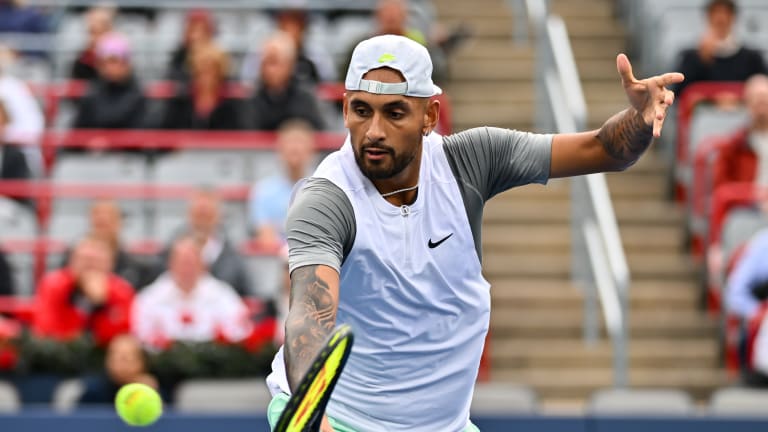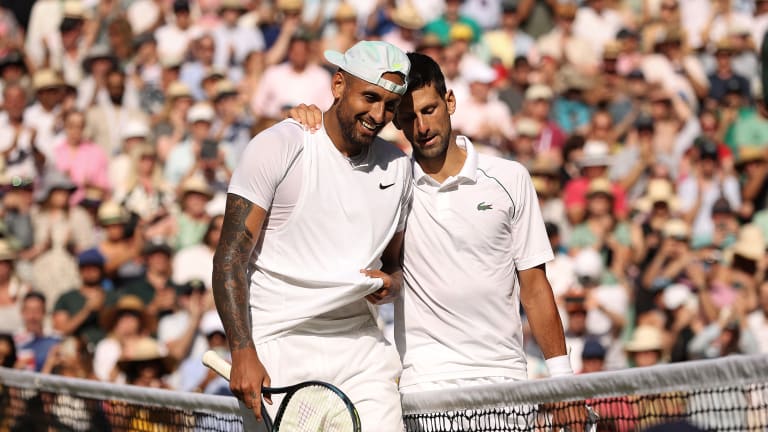The Summer of Nick
Now that Nick Kyrgios is winning, what can the rest of us learn—and not learn—from his sui generis playing style?
By Aug 10, 2022The Summer of Nick
Measuring the Kyrgios Effect: Nick's breakthrough stretch notwithstanding, it's still caveat emptor
By Sep 14, 2022The Summer of Nick
Nick's pick to win the US Open: Carlos Alcaraz
Aug 22, 2022The Summer of Nick
"A lot of things are clicking": Taylor Fritz moves swiftly past Nick Kyrgios in Cincinnati
By Aug 18, 2022The Summer of Nick
The Volley: Is it renaissance or redemption for Kyrgios in North America?
By Aug 04, 2022The Summer of Nick
In Atlanta field packed with home favorites, Nick Kyrgios remains the main event
By Jul 29, 2022Ranking Reaction
Belinda Bencic becomes first mom in the Top 10 since Serena Williams in 2021
By Jan 12, 2026Player News
Milos Raonic announces his retirement from tennis: "The time has come"
By Jan 12, 2026Weekend Winners
Sabalenka, Medvedev, Swiatek, Bencic, Bublik: Who had the most significant win of week one?
By Jan 11, 2026Lifestyle
Donna Vekic launches DASH, a diamond jewelry brand made for movement
By Jan 11, 2026Now that Nick Kyrgios is winning, what can the rest of us learn—and not learn—from his sui generis playing style?
Our "Summer of Nick" series continues with a discussion about the Aussie's impact on the recreational game—and looks back some memorable moments in Montreal.
Published Aug 10, 2022
Advertising
Advertising
Advertising
Advertising

Nick can strike bomb serves and wallop the ball from the baseline, but given his doubles prowess, he's also very comfortable at net.
© 2022 Getty Images
Advertising
Advertising
Advertising

If Kyrgios can bring what he did in his Wimbledon final loss to Novak Djokovic each week, he'll win more often that not.
© Ryan Pierse